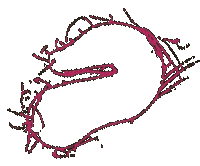February 20, 2004
maps vs. instructions
Maps and instructions function very similarly on the surface. They can both show you the way to go. Maps tend to be full of detail. The amount of this detail depends on the map. You may have just the outline of the states in our country. On the other hand, you may have tiny details like place names, roads, rivers, topographical designations, populations, etc. Maps give information with out being terribly limiting on how you use that. While instructions lack this broad base of information, they do provide specificity. They can tell you exactly how to get some place. What they don't have is the spatial relationships of maps. Maps represent where places are compared to other places. This provides an added level of implied detail. Instructions have a potential to become more informative by adding more information and displaying it as physical relationships. The form instruction general take implies nothing but order. Likewise, a map can gain specifics through personalization. A map showing two places with one particular route highlighted moves closer to being instructions.
My preferences are for maps. I'm much more attracted to maps as compact information. I just like the idea of so much information being packed into such a small package. The ways maps hold information is much different from my other favorite information format; books. Maps can imply information through visual components as well as clearly state things. They can also use symbols and colors to abbreviate other facts.
But alas, in my own work, I use instructions. Written directions are much easier to refine for me. Instructions have to be refined to a concise state to be broadly effective over a number of users. Instructions have to take into account the results of unbiased test subjects, not just the mental experiment of the writer's head. Instructions have a set of formal elements (i.e. words, phrasing) that lend themselves to being more easily edited. Mmm, no conclusion.


